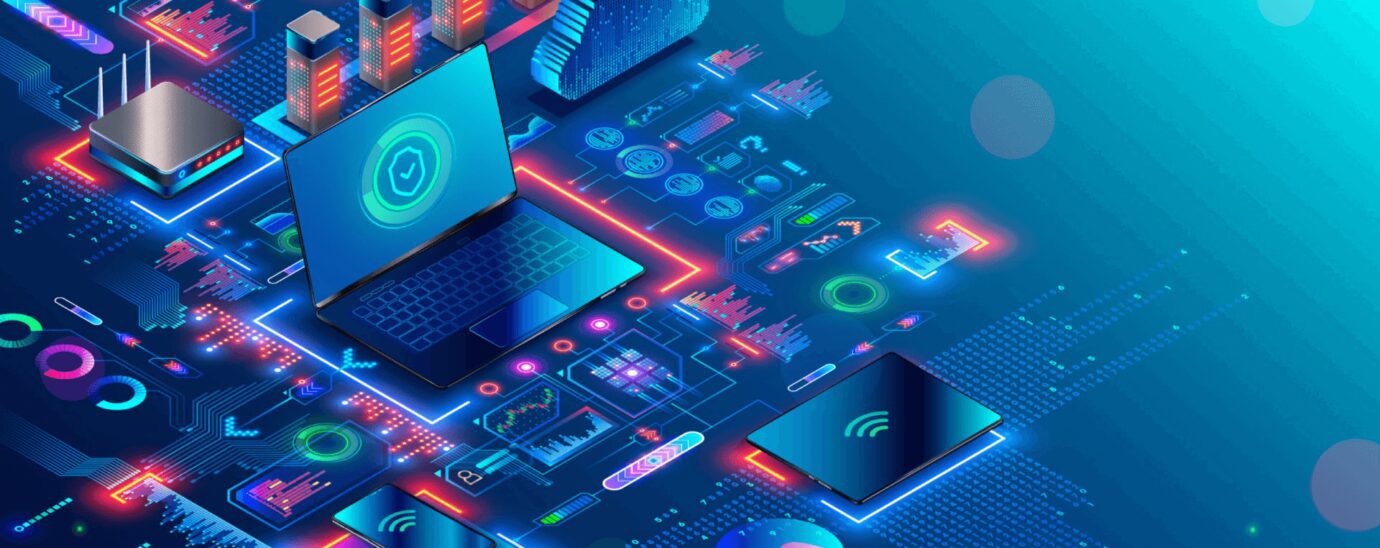What Are Data Centres? The Digital Reality

Access to the internet and cloud storage is easier than ever and always at our fingertips. We have internet access from our mobile phones and can make instant e-payments or connect with others as and when we want, often without considering where this kind of data comes from.
All that data has to be stored somewhere! Instead of storing data on-site on computers at home or at work, it is kept on servers off-site in large data centres, which require innovative DCIM (data centre infrastructure management) systems to keep track of the huge volume of data they contain.
What are Data Centres?
The heart of the internet, data centres are buildings which house tens or even hundreds of racks of computer servers and back up components that run 24/7. Servers located within data centres are tasked with collecting, storing, processing and distributing large amounts of data.
Due to the need for specialist, skilled workers and proximity to the majority of users, the largest data centres tend to be located in or near the country’s big cities, such as London and Shanghai.
How are Data Centres Effectively Managed?
As you can imagine, data centres require accurate and intelligent management systems to monitor the huge amount of assets they contain, such as DCIM software, which accurately manages capacity and optimises performance.
In the past, data centres could be managed using limited systems such as Excel and legacy internal databases. Fortunately, since then, DCIM software has been developed which offers a new opportunity to gain back full control and visibility of critical data centre space.
DCIM grants superior operations management, with automated alerts meaning data centre managers are able to act fast, pinpointing and solving issues before they grow into disasters.
The Steps Involved in Managing a Data Centre
Following a thorough audit of all assets to log a full and accurate inventory, DCIM follows the following steps:
1. Data Collection
Using an intuitive process for collecting and maintaining asset data; sensors, hardware and software are installed to facilitate the relay of information relating to capacity, energy consumption and operational statuses across multiple sites and equipment.
2.Analysis
Data collected is used to monitor and predict trends in usage and to keep track of thresholds, with real-time alerting of power and capacity – crucial information used to improve efficiency.
3.Tracking
With tracking, data centres can align business goals with key metrics such as PUE (Power Usage Effectiveness) and bandwidth usage across IT infrastructure to monitor and predict changes, problems and future outages.
4.Automation
Gain increased accountability with integrated tracking, logging and reporting to understand current capacity, asset performance and cooling systems. Automated reports and tickets pinpoint exactly where PPM (Planned Preventative Maintenance) is required and helps data centre managers make more informed decisions.
5.Recovery & Continuity
In the event of critical failure, procedures are implemented to backup server locations, UPS equipment and generators. A reduction in downtime means a reduction in wasted time and money.
Power Management Strategies for Data Centres
For many reasons, but mostly economic and environmental, power usage needs to be monitored, measured and managed within any data centre. Data centres are known for their intensive energy usage and carbon emissions and, with net-zero targets in place, power management strategies must be implemented.
DCIM is used to provide complete administrative control to prevent any unexpected outages or irregularities that can cause damaging downtime or data loss.
UPS (uninterrupted power supply) units are designed to provide emergency power in the event of a power outage. An Uptime Institute survey found that UPS failure causes 53% of power-related outages in data centres. With DCIM’s asset management of capacity and performance, such power outages can be simply avoided.
Data Centre Security Threats and Hazards
The valuable data held at data centres makes them an extremely attractive target. Hackers will target any vulnerabilities in data centres, from supply chains and staff to cyber and physical security systems. A cyber attack could result in downtime, fines and huge financial losses, which not only affect data centres themselves but also the thousands of users.
Which is why all data centres need to be prepared by having systems in place to detect cyber attacks and measures to respond to them and minimise disruption.
Best Practices for Optimising Performance
We already know that data centres can be managed with DCIM. In order to truly optimise data centre performance, it’s recommended to implement the best option on the market, next-gen DCIM by Assetspire.
This latest intelligent technology outranks outdated alternatives and offers future-proof capabilities, allowing immediate visibility of all assets and live insights into your data centre’s capacity, power and cooling performance. On average, when using Assetspire’s DCIM software, ROI can be achieved in less than a year with energy savings of up to 30% made through cooling energy savings, optimised capacity and smarter asset management.
